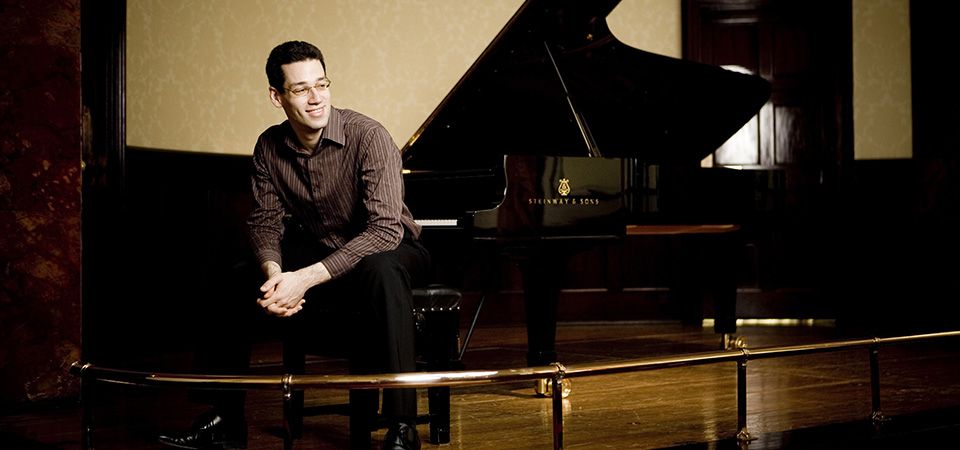
The Beethoven-Biss ‘Moonlight’ Approach
BERKELEY—Pianist Jonathan Biss must be winning grateful nods from the composer high above right about now. Biss meticulously adhered to all the score markings in his all-Beethoven recital, avoiding all flimflam, personal touches or effusive messages from the heart in getting down to brass tacks (as this observer verified, with score in lap as it firmly poured out its instructions in black and white).
Consider Biss’ playing the “Moonlight” Sonata. Many interpreters will douse it in perfume, draw out the tempos, and conjure up some “Immortal Beloved” lady sitting on the piano bench next to the composer, entranced. Biss’ reading is dry-eyed, perhaps short of rubato or the score’s dolce (sweetness), but sincere and straightforward. He can make phrases sing, and his upward runs remind you of feathery birds taking wing.
Technically, Biss is a ravishing, no-nonsense interpreter, the exponent of great virtuosic runs Beethoven sprinkles all over his scores, a well-suited classicist for performing all 32 sonatas over seven concerts and many months here this winter. All from memory.
His sold-out recital at Hertz Hall on the weekend of the composer’s birthday was a sterling tribute to that master of supreme pianistic versatility born nearly 250 years ago in Bonn. After all, while others (like Scarlatti) could pour out hundreds of sound-alike sonatas, Beethoven brilliantly varied his approach in this clutch of five sonatas, almost as if he were five different composers—ranging from lesser finger exercises only eight minutes long (“Cuckoo” Sonata, Op. 79, No. 25), to a major late-life variations piece (Op. 109) almost triple the length, deeply innovative and transcending many moods.
Bisshas wisely avoided the chronological approach in programming, sprinkling early-middle-late into each program.
Then here is Beethoven’s own emotional rollercoaster to discuss. The Sonata No. 24 Op. 78 bears the dedication “A Therese,” Therese von Brunswick, one of his piano pupils in whom he was allegedly infatuated. It sets off with the ardent instruction adagio cantabile (lyrical adagio) and a languorous theme. But if he was in love with her, why did he omit the traditional third and fourth movement?? Did he get slapped at the piano bench after the Second??
The piece de resistance was the Op. 109, part of his trio of late sonatas which entered a futuristic world of exploration, one that Beethoven’s contemporaries were far from ready to accept. It’s a capricious piece with abrupt mood swings and shimmering waves of sound, partly calling for “as if in song, with deepest sensitivity.” Here the composer was communicating with later generations, perhaps to us, foregoing the styles of his times as he hit his 50th birthday, merely six years before his death. The enthusiasts at Hertz Hall on campus clearly felt, in their reaction, that he was speaking to them.
In preparation since 2011, Biss plans to release the complete Beethoven set on recordings next year.
CLASSICAL RESURGENCE—Berkeley could be one of our campuses where classical music ranks in importance with football games. How else to account for the chancellor, Carol Christ, attending more classical concerts than home football games?? These days, her presence in the halls—inevitably low-key—is less notable than her absence.
Music is the mediator between the spiritual and the sensual life—Beethoven
ALL-BEETHOVEN RECITALS, Jonathan Biss, Piano, most recently Dec. 15, Hertz Hall, Berkeley. Auspices of Cal Performances. For CP info: (510) 642-9988, or go online: www.calperformances.org.